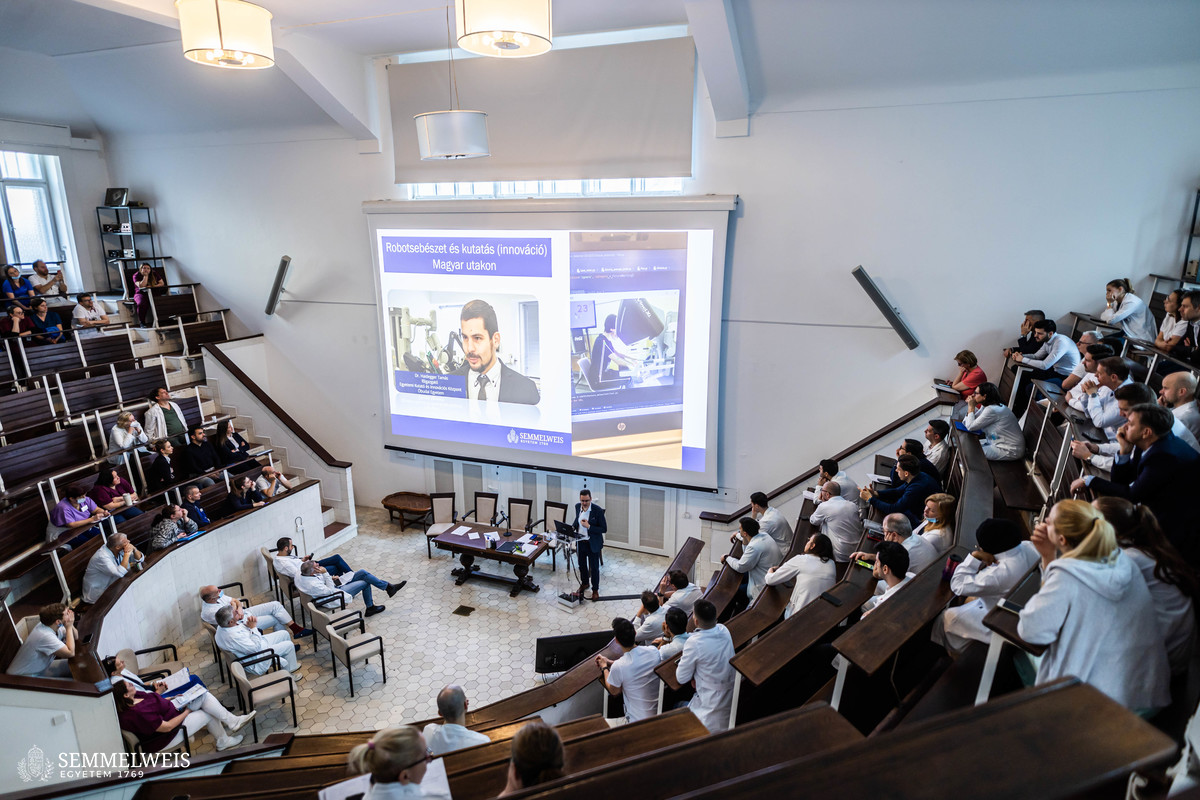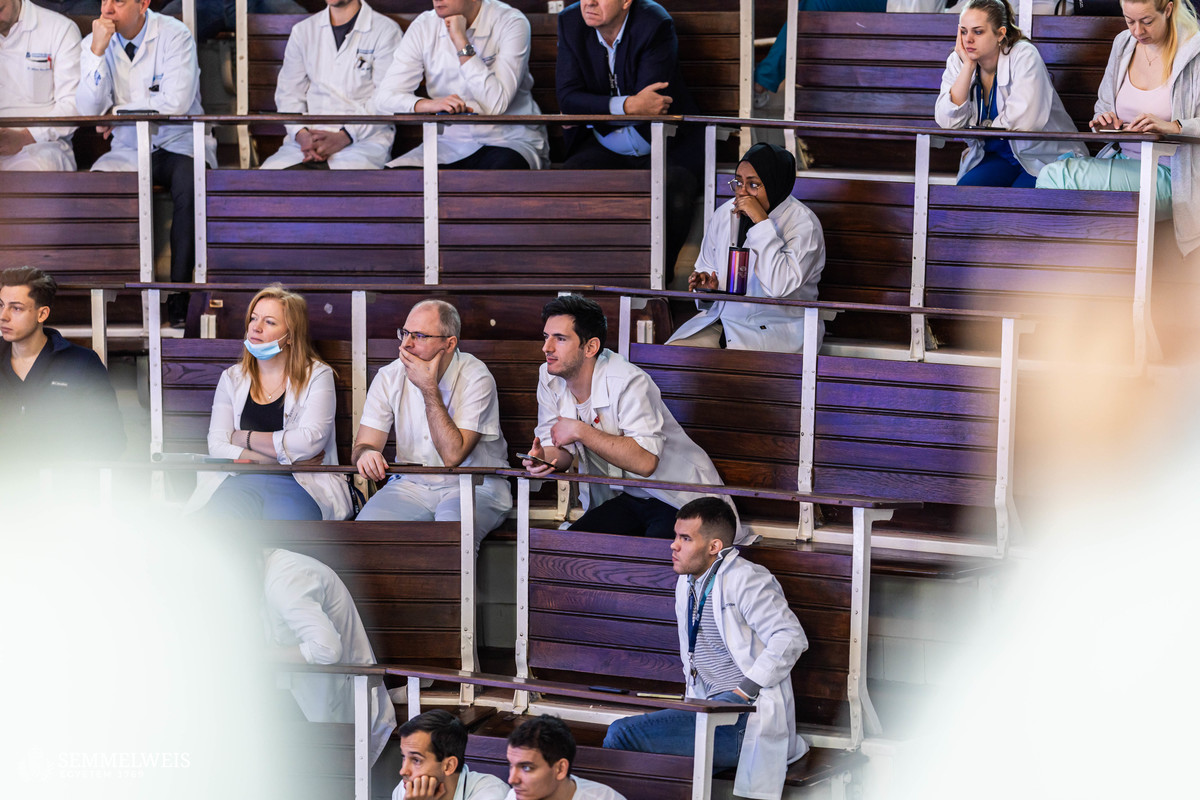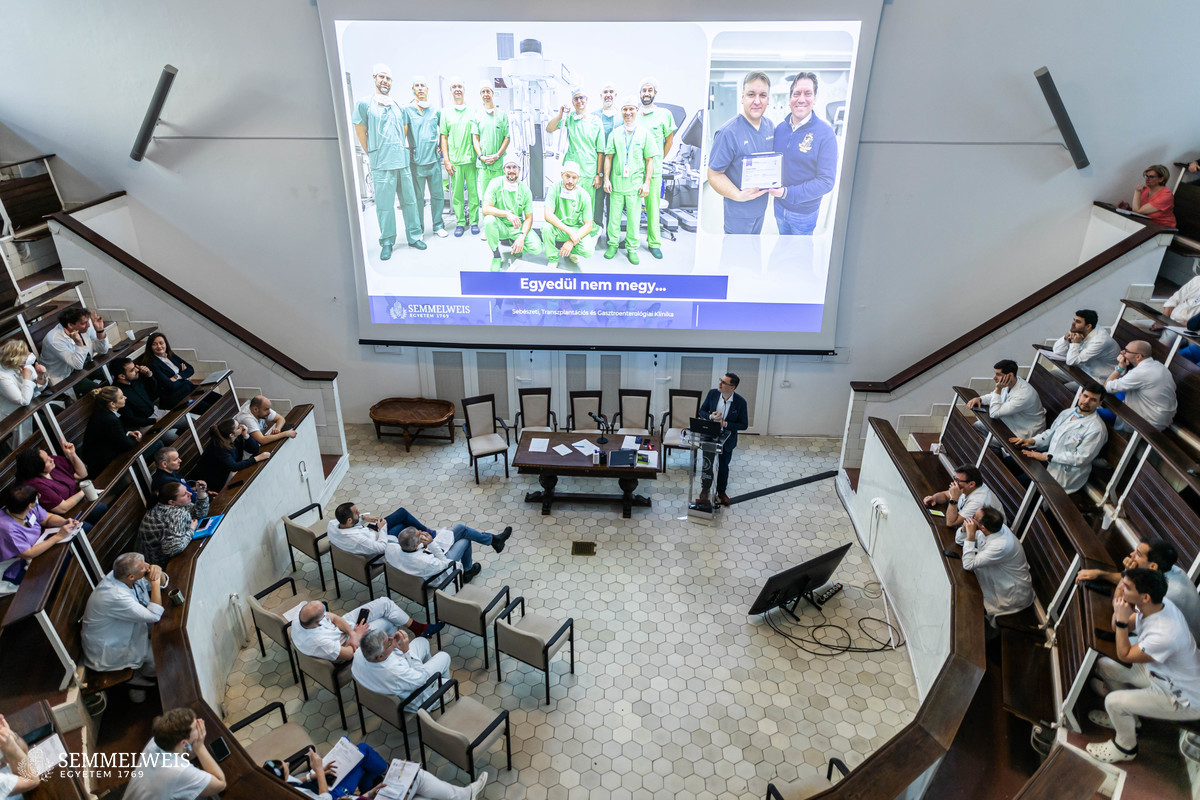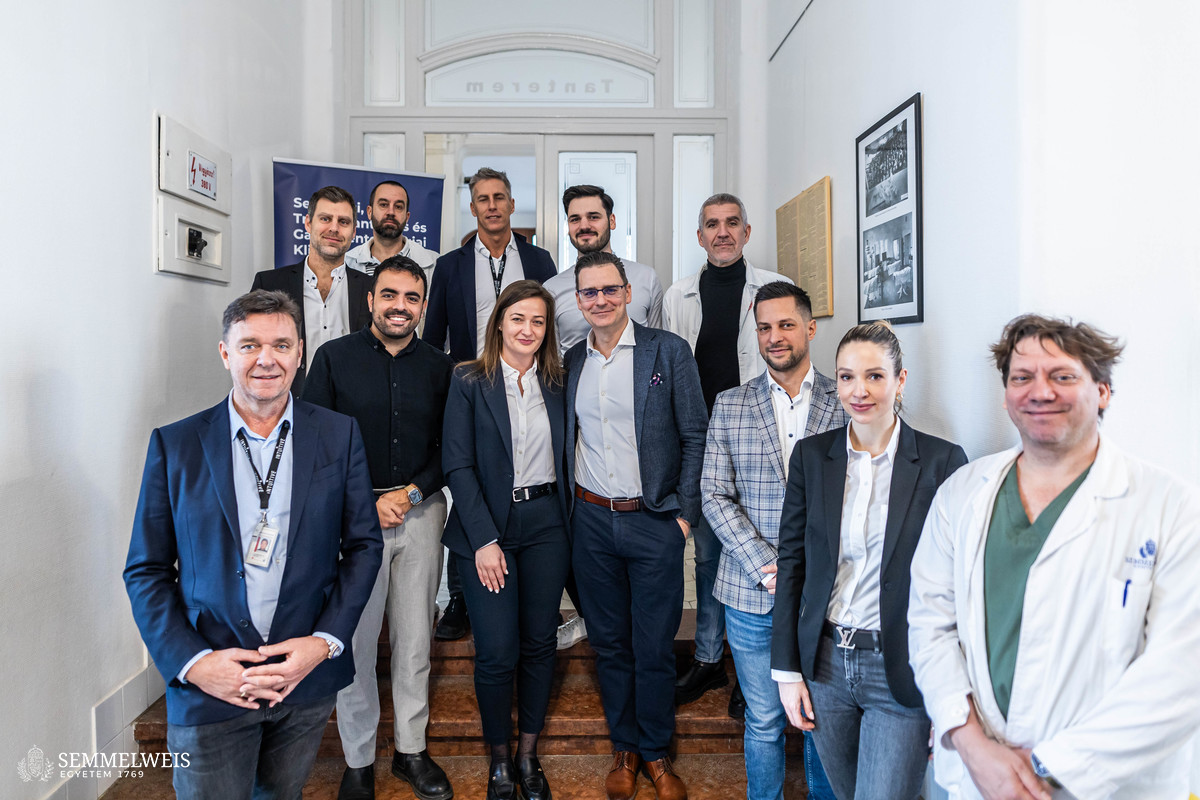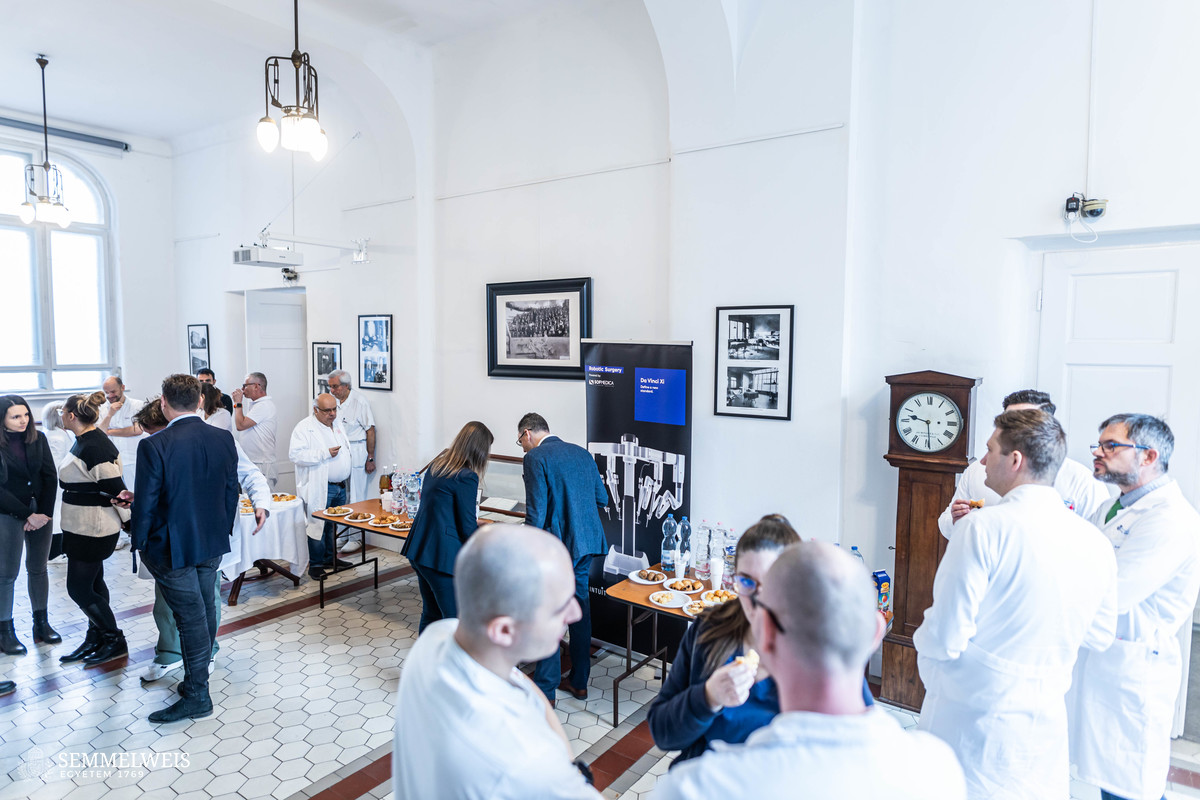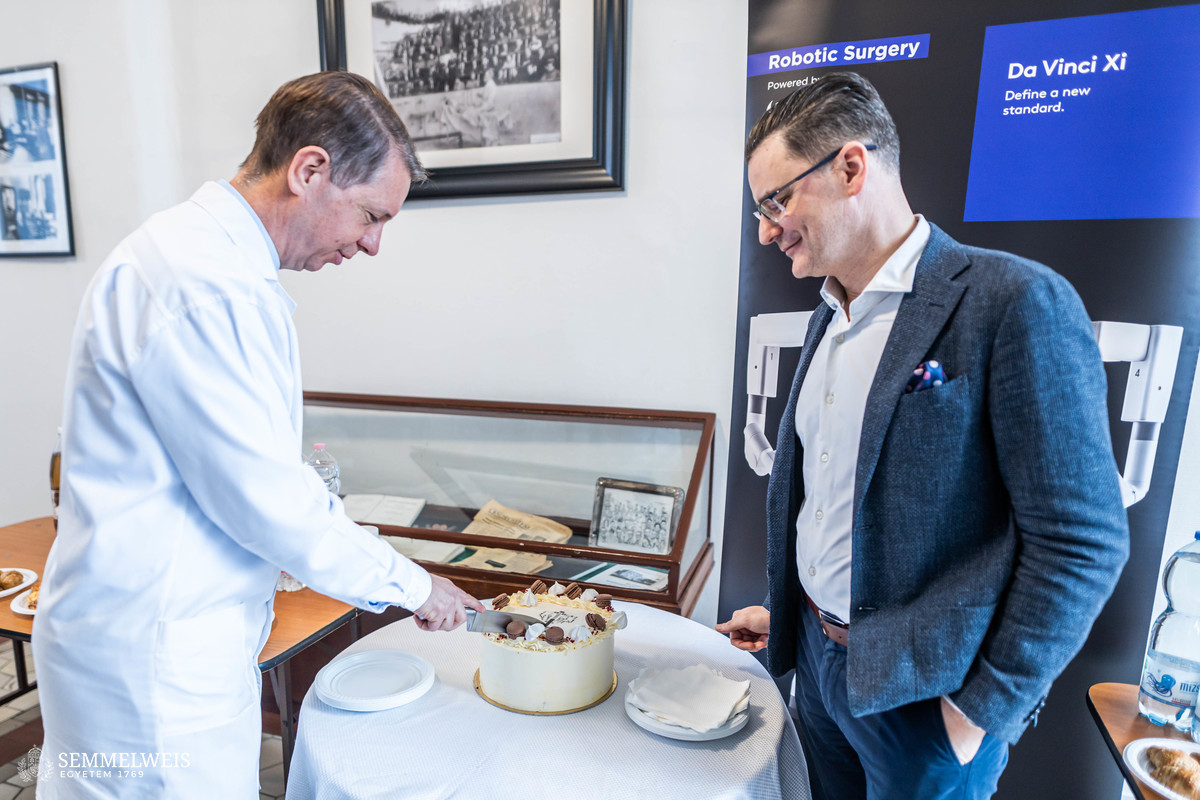A result of perseverance, learning, and continuous development – this is how Dr. Attila Szijártó, Director of the Department of Surgery, Transplantation and Gastroenterology (STéG), the head of the robotic surgery team, and the first surgeon to perform robotic surgery in Hungary, described the “secret” of the successful robotic surgery program and the 1000th successful robot-assisted surgery. As he pointed out, with around 440-450 robotic surgeries performed at the university annually, each case brings them closer to the perfection this technique can offer.
There is more to this achievement than just statistics, which show that 1000 of the more than 4000 surgeries in Hungary were performed at Semmelweis University: We have been able to perform state-of-the-art robotic surgeries, highly complex oncological and other advanced procedures in all three disciplines, surgery, urology, and gynecology.
– Dr. Attila Szijártó
The director stressed that the successful robotic surgery program was backed by a powerful professional team. “Anesthesia, the surgical staff, and finance have all created a solid base for seamless patient care and a successful robotic surgery program, which started in 2022,” noted Dr. Attila Szijártó.
The firsts and bests of three disciplines
The 1000th robot-assisted procedure was performed by Dr. Ádám Tabányi, a specialist at the Department of Obstetrics and Gynecology. The very first da Vinci-assisted surgery was performed by Dr. Attila Szijártó, Director of STéG, on May 24, 2022. The first da Vinci robot-assisted urological surgery was performed on June 22, 2022, while the first gynecological surgery with da Vinci was conducted on July 4, 2022, by Dr. Balázs Lintner, Chief Surgeon. In 2023, the range of gynecological interventions that can be performed as robot-assisted surgery in professionally justified cases was further expanded: The first two successful da Vinci robot-assisted endometriosis surgeries were performed at the end of 2023 by Dr. István Szabó, Associate Professor and Deputy Director of the Department of Obstetrics and Gynecology.
As Dr. Attila Szijártó explained, in addition to surgery, knowledge sharing, education, and research are also important components of the program. He is proud that his dedicated colleagues not only used the da Vinci system for surgery but also for education. “We gave several presentations, for example at the Summer University, but we also organized a summer school on robotic surgery in Germany. Our joint research with Óbuda University investigates the positive ergonomic effects of robotic surgery. We have observed that a sitting posture, the effortless handling of the instruments, and other positive factors reduce surgeon fatigue during prolonged, long operations. As a result, exhaustion-related stress is less likely to occur, which increases efficiency. We are conducting tests in a laboratory setting: we are examining posture, movement, fatigue, and stress levels with volunteer students, surgical residents, and specialists. We have already published a paper on this in the international journal Sensor,” he said.
A growing team
Semmelweis University’s robotic surgery team has expanded with a new trained console surgeon. As of now, 11 console surgeons – six surgeons, three gynecologists, and three urologists – and 16 robotic surgical assistants are involved in the program.
Speaking of short-term goals, Dr. Attila Szijártó noted that they aimed to broaden the surgery portfolio. “Our goal is to launch robot-assisted surgery for diseases of the upper digestive tract (esophagus and stomach) and to complement our transplantation services with robotic surgery. The first stage involves extracting a kidney from a healthy donor as part of a living-donor kidney transplantation; we have reached outstanding numbers in this field in recent years. This further enhances donor safety by reducing surgical stress. Our long-term goal is to work towards robot-assisted kidney transplantation. This procedure is already available in the world, as is the form of living-donor liver transplantation where both the removal and the transplantation are performed robotically,” he pointed out. The 1000th intervention was marked with a presentation on the results achieved so far and a cake.
Antecedents
The first gall bladder removal in Hungary was also performed at the predecessor of Semmelweis University. The operation was carried out on January 12, 1893, by Dr. Gyula Dollinger, the founder of the Üllői Street department of the then 1st Department of Surgery and founding president of the National Cancer Committee, some 129 years before the robot-assisted removal of the gall bladder.
Éva Fekete-Obreczány
Translation: Judit Szabados-Dőtsch
Photos by Bálint Barta – Semmelweis University
